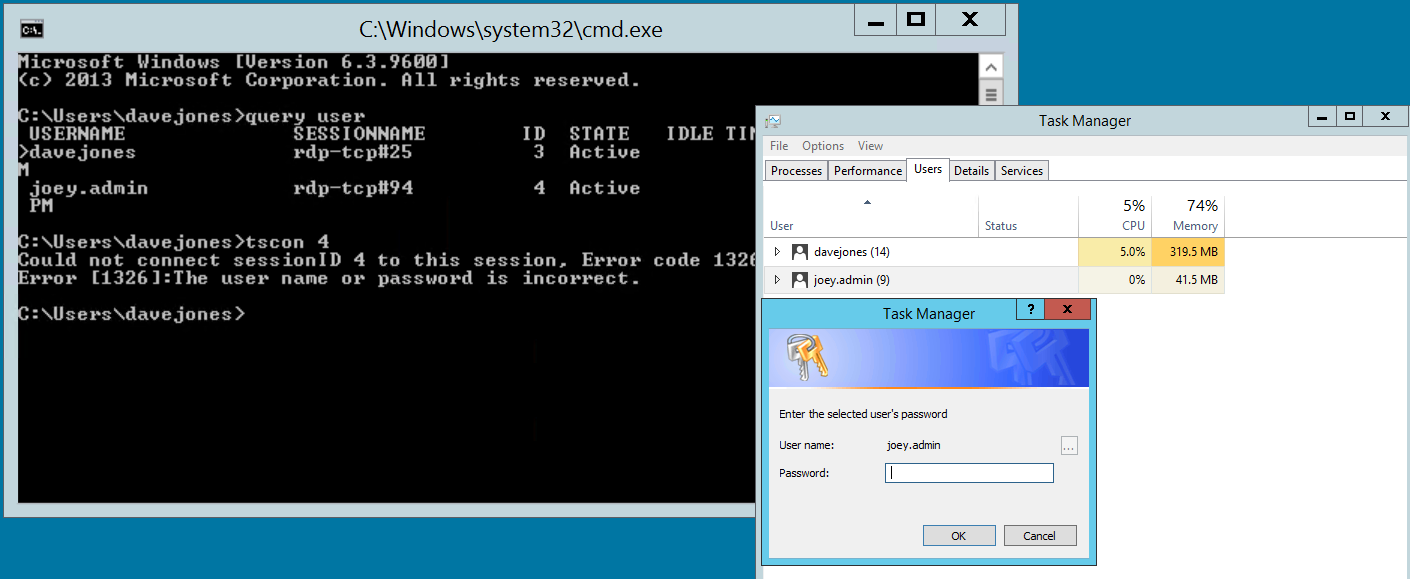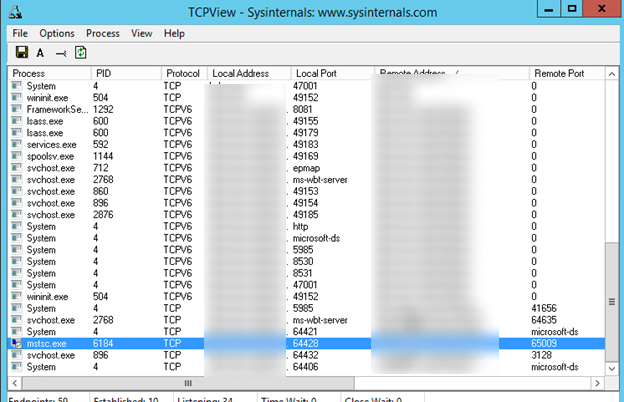- Remote desktop shadow command line in Windows 8.1 An administrator can also run the following command line on a machine with the Windows 8.1 MSTSC.EXE package. Mstsc.exe /shadow:sessionID /v:Servername /u:Username /control /noConsentPrompt.
- To shadow other sessions, on the RDP-TCP Properties dialog box, on the Remote Control tab, click to clear the require users permission check box. It doesn't affect the console session. To remote control the console with no prompt for approval: Open Group Policy Editor (Gpedit.msc) on the server that is running Terminal services.
Is there any way to turn off or hide the shadows for desktop icon labels? On Windows 10 desktop, the text under icon text has a drop shadows effect by default, which can make the text illegible. Here’s how to remove shadow under icon text on Windows 10 desktop.
Disabling shadow will make your desktop icons’ text labels easier to read against your background:

WVD allows local administrators to shadow user sessions. You can do this easily with WVDAdmin or using the command-line like this: mstsc /v:WVD-DESIGN-404 /control /shadow:2 /prompt In most companies, a help desk agent supports users using applications. For that, local admin privileges are not necessary and not recommended. I have deployed a test VDI setup on 2012 R2 remote desktop services, and when I attempt to shadow a session on one of our Windows 10 virtual desktops, I get a message that says; 'The computer name. Regular RDP connections work just fine, but the main goal is to just shadow and share the screen of the computer so as to not kick anyone out working on it, or have to check across the office to see if it is free to use. Windows 10 Pro to Windows 10 pro is the configuration, build 1909.
How to Remove Shadow Under Icon Text on Windows 10 Desktop?
- Right-click the This PC shortcut on your desktop, and select the Properties from the drop-down menu.
- In the System window, click Advanced system settings on the left side.
- The System Properties window will open the Advanced tab. Click the Settings button under Performance.
- Under Visual Effects tab, uncheck the box marked “Use drop shadows for icon labels on the desktop“. Click Apply and then OK. If you can’t see the change, restart your PC.
That’s it!
If you’re a fan of hacking the Windows registry, you can simply remove drop shadows for icon labels on the desktop using Registry Editor. Navigate to the following key:
HKEY_CURRENT_USERSoftwareMicrosoftWindowsCurrentVersionExplorerAdvanced
Double-click the ListViewShadow entry in the right pane, change its value from 1 to 0. Reboot your computer and you should no longer have the drop shadow under icon text on Windows 10 desktop.
Related posts:
One of the continuous laments that we’ve heard from our customer base, for years now concerns user session shadowing in Remote Desktop Services. This is a shame, because the internal architecture for shadowing from Windows Server 2012 R2 onwards is pretty amazing.
Windows 10 Shadow Rdp
Using MSTSC to shadow however, eh, not so much.
Let’s Face It: Remote Desktop Shadowing Hasn’t Been a Great Experience For, Well . . . Forever!
The litany of complaints includes problems like:
- lack of proper shadowing support (zoom out) for multiple monitor sessions
- dreaded permissions errors
- the unfortunate requirement for help desk users to be administrators on the terminal servers they want to shadow
- the inability for Windows 7 systems to initiate shadowing on Server 2012/2016/2019 systems and Windows 8 and 10 workstations.
There was also the small issue that there were no tools for shadowing/remote assistance inside Windows Virtual Desktop in Azure.
As a result, admins and IT staff have been paying an arm and a leg for remote assistance tools to bridge this gap – tools that require heavy install footprints, hundreds or even thousands of dollars per technician per year, and tedious invitation URLs, etc are required to start helping users.
Which Reminds Us: Delegation of Administration Options for Remote Desktop Services Have Been Nonexistent For Way Too Long!
The other need that we hear frequently from our customers is the ability to precisely delegate Remote Desktop Services management permissions to their help desk and front line support staff. To date, the only real option has been to give help desk staff admin rights on session hosts and connection brokers. Not an ideal situation from a security, or a “whoops I just rebooted a terminal server with 30 user sessions running line of business apps” perspective.

Mstsc Shadow Windows 10 Download
We tried to resolve some of these issues with our RDSConfig utility, that allowed permissions reassignment for users and groups on session hosts. However, in larger RDS collections, you need a way to apply those permissions to a huge swath of session hosts all at once – especially as new session hosts are brought online. Also, to do their jobs, help desk staff need rights to query the Connection Broker to dynamically list RDS collections and the servers that are members of each, plus they should have the ability to read RDS-related performance counters on those session hosts, so they can troubleshoot things like network latency from the client to the server.
Mstsc Shadow Windows 10 App
So, We Figured Out How To Make Shadowing Much Better AND Created a Wizard To Let You Delegate RDS Management Tasks To Your Help Desk Staff
Mstsc /shadow Access Denied Windows 10
We call these new tools in the Remote Desktop Commander Client Premium Management Features. For $99.99 per admin or help desk user per year, all of the aforementioned problems go away. Want to shadow Server 2012+ systems from Windows 7? No problem. Want to monitor multiple user sessions at once in live view in one window? We do that. Do you have RDS users with multiple monitors that you haven’t been able to shadow before? Again, we’ve got you covered.
Watch this quick video on YouTube to see these features in action:
Shadow Rdp Control
Next, download the latest copy of the Remote Desktop Commander Lite client. Once you install it, you’ll be able to preview the SuperShadow features for 15 days. The RDS Management Delegation Wizard becomes available after you purchase a subscription from us.
Once you start your subscription, you’ll immediately be emailed a license file that will unlock all of those features.
**Note 1: With the release of Premium Management Features in Remote Desktop Commander Lite, legacy shadowing support for Windows Server 2008 and legacy shadowing through the MSTSC client were retired. These features remain available in our Remote Desktop Commander Suite solution however.

**Note 2: If you are an existing Remote Desktop Commander Suite customer who would like to test these new Premium Management Features, please install the latest client on a VM or system OTHER than the system running the core Remote Desktop Commander Suite components.
Updated: November 2020.
